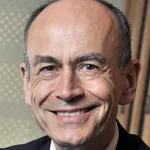
Photo by Kimberly Boyles, Shutterstock.
Stanford Medicine Scope - April 30th, 2018 - by Bruce Goldman
A reasoned and provocative opinion piece in JAMA (once known as the Journal of the American Medical Association) offers a prescription for America's huge and still growing opioid addiction problem: treating the medical community's addiction to writing opioid prescriptions.
Penned by anesthesiologist and pain expert Gary Peltz, MD, PhD, and Nobel laureate Tom Sudhof, MD, a neuroscientist, the commentary notes that current federal funding emphasizes research on later stages of drug addiction associated with drug craving and relapse. But it would be far more sensible to focus on the earliest stage of development of addiction, the so-called "binge/intoxication" stage, before the spark of pleasure ignites a forest fire of chronic craving, the researchers write. (A middle stage is marked by the onset of withdrawal symptoms and physical dependency.)
During the initial stage, opioid drugs straightforwardly induce a pleasurable sensation by stimulating the brain's reward circuits. Evolution stuck that circuitry in our heads to guide us toward behaviors essential to our survival, such as eating, mating, sleeping and, let's face it, fighting.
(In a Stanford Medicine article, "The Neuroscience of Need," I wrote extensively about how drugs of addiction fool the brain into thinking that taking drugs is a terrific idea. The article is six years old, but believe me, nothing's changed. The reward circuitry is one of the brain's most carefully conserved features.)
A huge fraction of today's opioid-addiction problem is, Peltz and Sudhof write, "iatrogenic" — in other words, caused largely by medical practice:
More than 10 years ago, a change in the pattern of drug abuse in the United States became evident: [P]rescription opioids had become a major driver of opioid abuse. Patients made an increased number of physician visits to obtain opioids (32 million per year), and physicians were prescribing high-potency opioids (hydrocodone, oxycodone) with a street value that far exceeded that of heroin.
That trend continued, the authors write, to the point where "more people were misusing prescription opioids than all other illicit drugs combined. The increased number of prescriptions for potent opioids written by clinicians had significantly contributed to the growing opioid problem."
How to turn the tide? Public health measures such as vaccination regimens for infectious diseases, colonoscopies and Pap smears for cancer, and seat belts for car-crash trauma have been unambiguous successes. Prevention works best when employed before the match is lit, not once the forest fire is raging.
But rather than demanding that prescriptions of opioids — arguably the best painkillers around — be regulated to a screeching halt, the editorial suggests more careful steps. Ironically, the same trend that's contributed mightily to the rampant spread of opioid addiction in the Unites States — overprescribing by physicians — is also amenable to potential policy maneuvers to rein it in, they write: for starters, tracking patients' usage from day one.
"Unlike illicit drug use, clinicians know when opioid-naive patients are initially exposed to opioids," Peltz and Sudhof write. A single day of opioid use spells nearly a 1-in-16 chance of becoming a chronic user (still on opioids a year later). Eight straight days (the period covered by 30 percent of opioid prescriptions, according to the editorial) more than double those odds. Use opioids long enough and, however resistant you were initially, eventually you'll become addicted.
It may also help to pair opioids with other existing drugs (such as the anti-nausea medication ondansetron) that, unexpectedly, have been shown to reduce the probability of opioid addiction. The very unexpectedness of those findings, the authors write, speaks volumes about our current relative ignorance regarding the intricate neural mechanisms underlying early-stage addiction.


